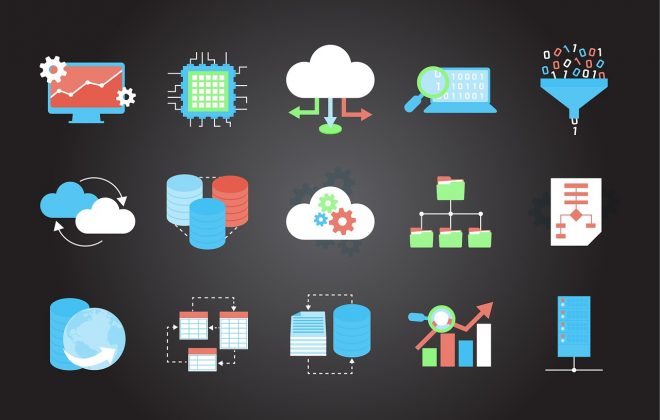Smart Healthcare – The Many Benefits for Patients
The healthcare industry is a complex organism. Given its complex nature, this industry has taken its time to jump on to the new technology bandwagon. The sheer number of stakeholders and invested parties, and the huge impact that the smallest of actions has in this sector, every step taken has to be carefully calibrated. However, as the world continues to be transformed with the help of smart technology, healthcare, too, has become a proactive technology adopter owing to the monumental impact technology has shown towards improving patient safety and reducing healthcare costs.
According to a report by Frost & Sullivan, “the number of people aged 65 or older is projected to grow to nearly 1.5 billion in 2050.” The report also shows “total health and long-term care is set to double to nearly 14pc of GDP among OECD countries. Among the BRIC countries, which are starting from a much lower base of around 2.5pc, that figure is expected to rise to around 10pc of GDP.” Given the rise of chronic diseases coupled with an aging population and the consumerization of healthcare, hospitals are leveraging technology to improve patient care outcomes and patient experiences. Here’s a look at how smart healthcare comes to the rescue.
Smooth Hospital Experiences
Patients today want smooth hospital experiences. They want the optimal use of the time that they spend in a hospital. Unfortunately, most hospital experiences are everything but this. With smart technology, hospitals can completely transform the way the patient engages with the hospital. Things like smart parking that guides the patient to a vacant parking spot can save precious time. Patient history can be taken by robots and updated correctly to the patient health record systems. All invested stakeholders can access these records in a device-agnostic manner. The use of these technologies translate to smoother patient experiences as the patient then does not waste time locating information and navigating the complex hospital environment but can address his health issue in the shortest timeframe.
Reduced Error Rates = Better Patient Care
A 2016 study from John Hopkinsshows that medical errors are the “third leading cause of death in the U.S., responsible for more than 250,000 deaths per year”. With smart technology, doctors can gain access to near real-time information and take a data-driven approach to ensure better success rates.
Smart technology makes the proactive use of data to improve patient care and patient outcomes. Patient medical devices such as ventilators, drug infusers, pulse rate monitors, etc. can ‘talk’ to one another and help doctors and caregivers make informed interventions in a timely manner.
Given the vast amount of data these smart health devices generate, doctors can enable better care, predict patient readmission rates and implement evidence-based medicine by leveraging the actionable and informative data that is available at their fingertips. This helps in moving the healthcare model from a predictive one to a preventive one, paving the way for better health outcomes.
Efficient Time Usage
Most patients feel that hospital visits are a huge drain on time where a lot of time is wasted in waiting for the doctor to exchanging information and identifying the next steps. The ‘doctor-patient’ relationship as it was depicted in the early days of medicine is under immense pressure. Patients today want better interactions with their doctors and want to ensure that the time spent with the doctor is optimally utilized in designing care strategies. Consumers also want their medical treatment to be based on shared decisions by accessing evidence in the form of current and complete medical information. Patient engagement satisfaction levels can be much higher if information exchange between doctor and patient is exchanged using a smart assistant such as an Alexa, instead of a doctor keying in or retrieving information from a computerized system.
Improved Communication and Better Extended Care
With smart healthcare, hospitals can improve their communication between different departments and stakeholders that ultimately improve the patient’s hospital experiences. The interconnectedness between departments ensures that all ancillary functions such as billings and finances departments etc. work seamlessly, and in an organized manner leading to fewer errors. Better communication also means improved collaboration between providers, reduced chances of duplicate tests, fewer denial claims, better records exchange with other hospitals, and enhanced referral interactions.
Smart healthcare also makes it possible to extend care even when the patients leave the hospital premises. For post-surgery patients, patients managing chronic health problems such as diabetes or patients battling illnesses such as cancer or Alzheimer’s, this comes as a great boon. Smart healthcare employs the use of sensors that can trigger alarms in the case of any data anomaly and ensures timely medical interventions. Reminders in the form of texts and alerts can be sent proactively to help patients for post-operative health management or even chronic disease management all of which make for better patient care, improved patient engagement, and superior patient outcomes.
Better Safety and Security
Smart healthcare contributes a great deal to make the hospital ecosystem safer for the patients. Smart health elements such as RTLS badging can show the presence of a staff member in a room, and even track a patient across the hospital network. This helps in ensuring that the patient is correctly attended to at all given points in time. RTLS badging also helps in checking concerns like infant abductions. According to National Center for Missing and Exploited Children report, almost 47% of infant abductions happen from hospitals in the US. Employing smart technology not only helps in helps in creating a solid line of defense against such miscreants but also help in preventing other errors such as infant mix-ups in hospitals. Employment of smart technology in the form of infusion pumps with wireless adapters, smart beds, etc. also contribute to making the hospital environment much safer for the patient.
While the healthcare sector is looking at ways to improve their internal processes, staff efficiency, productivity, and communication for better outcomes they have to become laser-focused on improving the quality of care. It is only when smart technology is employed within the care framework that these hospitals will be able to positively impact patient satisfaction levels and take patient care to a new level altogether.




